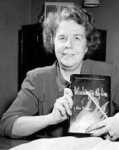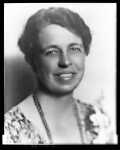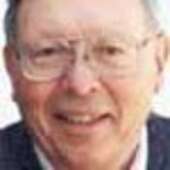Bess Furman Armstrong: Danbury's Washington connection
Monday, November 25, 2013

Bess Furman Armstrong
For almost 40 years, from the '20s to the '60s, Bess Furman Armstrong, a native of Danbury, Nebraska, was one of the most respected women journalists in Washington.
She was the first woman journalist to regularly cover the U.S. House of Representatives for a news agency (AP), she had the ear of President Roosevelt (through her long, close friendship with the president's wife, Eleanor) and she enjoyed the utmost trust of the people she interviewed, as well as her colleagues and editors.
Bess Furman was born to Archie and Mattie Furman in Danbury, Nebraska, in 1894. Archie was the editor of the Nebraska Weekly in Danbury. From a very early age, she learned to set type in her father's shop, and at the age of seven, Bess had a story of hers published in that publication -- the launch of a distinguished, lifetime career in journalism.

Eleanor Roosevelt
Bess graduated from high school in Danbury, after which she attended the Missouri State Teachers College and taught country schools for a few years, taking college courses in the summers, before returning to college at the Nebraska State Normal School at Kearney full time, where she graduated in 1918. At Kearney, she resumed her interest in journalism and became the first female editor of the "Antelope," the Kearney State Student newspaper.
Even while attending college, she worked as a reporter for the Kearney Daily Hub, and upon graduation she went to work as a staff writer for that paper -- and a feature and Sunday magazine writer for the Omaha Bee News.
In 1928 she wrote an award-winning story about Alf Landon's campaign stop in Omaha, which caught the attention of the Associated Press Chief, Byron Price, who offered her a position in the AP Washington office. She was destined to stay in the nation's capital the rest of her life.
Miss Furman's main assignments for the AP in Washington were to cover the activities of the wives of elected officials, and especially the wives of the presidents, but she also covered other issues of interest to her primarily feminine audience.
From 1928 to 1932, the U.S. President's wife was Herbert Hoover's wife, Lou Hoover. In the beginning, Bess' problem was that Mrs. Hoover hated reporters, and Bess had no access to the White House. But she was resourceful, and noticed that Mrs. Hoover was a great booster of the Girl Scouts of America, regularly inviting the girls and their leaders to tea in the White House.
At one such meeting, Bess outfitted herself in the uniform of the Girl Scouts and joined the other Girl Scout leaders at a tea party in the White House. Bess and Lou Hoover hit it off favorably and after that she was a regular caller at 1600 Pennsylvania Ave.
During Franklin Roosevelt's presidential campaign in 1932, Bess made the acquaintance of the president's wife, Eleanor, and the two became lifelong friends, enabling Bess Furman to join Mrs. Roosevelt's circle of closest friends. This friendship shaped Miss Furman's life and career.
Ms. Furman was given scoops on the Roosevelt family life and housekeeping in the White House. She regularly accompanied the first lady on her trips outside the White House, promoting Mrs. Roosevelt's favorite causes. The president's wife was very energetic, and Bess Furman was forced to purchase low-heeled shoes to keep up with her.
In the early '30s, Bess Furman met Robert Armstrong Jr., a reporter on the desk of the St. Louis Globe Democrat Washington office. The two reporters became close, but for some time Bess declined his proposals of marriage, citing the difference of some eight years in their ages. But love won out and the two were married in 1936, to the accolades of Eleanor Roosevelt and a bevy of Washington dignitaries, as well as the pair's journalistic colleagues.
Marriage and a life in Washington turned out to be fine for Bess and Robert, despite meager finances, when most reporters took deep pay cuts during the depression, and Robert's occasional bouts with alcohol.
In 1937, when Mr. and Mrs. Armstrong were expecting their first born, Bess insisted that she must return home, so that her child could enjoy a Nebraska birth. Mrs. Roosevelt had agreed to be the child's Godmother, and had already made a quilt for the baby's crib.
On April 4, 1937, Bess Furman Armstrong did indeed give birth in the St. Catherine's Hospital in McCook.
However, instead of one baby, there were twins, Ruth Eleanor and Robert Furman Armstrong. When the news was wired to Eleanor Roosevelt she was pleased and wired back that she would start on a second quilt immediately.
For several years before World War II, Bess, in addition to her work as a reporter, also ran a Washington Publicity Agency with her sister, Lucille, working mostly with various women's organizations. When World War II began, she went to work in the Office of War Information as the Assistant Chief of the Magazine Division.
From 1943-61 Bess worked as a reporter for the Washington Bureau of the New York Times. During this period, she became increasingly more interested in covering health, education, and science issues. This led to her taking a position in the Department of Health Education and Welfare. She became the head of the press information section of that Department in 1962, becoming the first woman to hold a top press job in a cabinet-rank agency.
Bess Furman (always her byline) was a prolific writer, writing books as well as her regular columns. Her well-received autobiography, "Washington By-Line" was published in 1949. She wrote a social history of the White House, called "White House Profile," which came out in 1951. Another of her books, "Profiles of the United States Public Health Service" has been an oft-cited reference work.
Ms. Furman's work as a pioneer woman journalist in Washington has been widely recognized and appreciated. Among her many honors: in 1946 she was elected president of the National Women's Press Club, and in 1975 she was inducted into the Nebraska Newspaper Hall of Fame.
Bess Furman, the lady who hob-knobbed with presidents' wives, Cabinet wives, senators and royalty, remained true to her roots, and instilled the love of Red Willow County in her children.
They returned home regularly to walk the streets of Danbury, the home of her parents and brother, and always worked in a visit to Marion, the home of her grandparents. Bess imparted to her children all of the happy memories of growing up in rural Nebraska.
Before her death, the president's wife, Eleanor Roosevelt paid tribute to Bess Furman Armstrong: "Few Washington correspondents have had more opportunity than Bess Armstrong for observing the political scene as well as the distaff side of the White House. Her book, "Washington Profiled," is interesting and entertaining and I think it will give a fresh and vivid picture to many people of the life in Washington, which is often not too well-understood by the country as a whole.
Bess Furman Armstrong passed away, at age 75, in 1969 at Woodacres, Maryland.
Source: Pat Redfern in Red Will County Bi-Centennial Hall of Fame
Femilogue -- Bess Furman Armstrong
The papers of Bess Furman Armstrong in the Library of Congress

